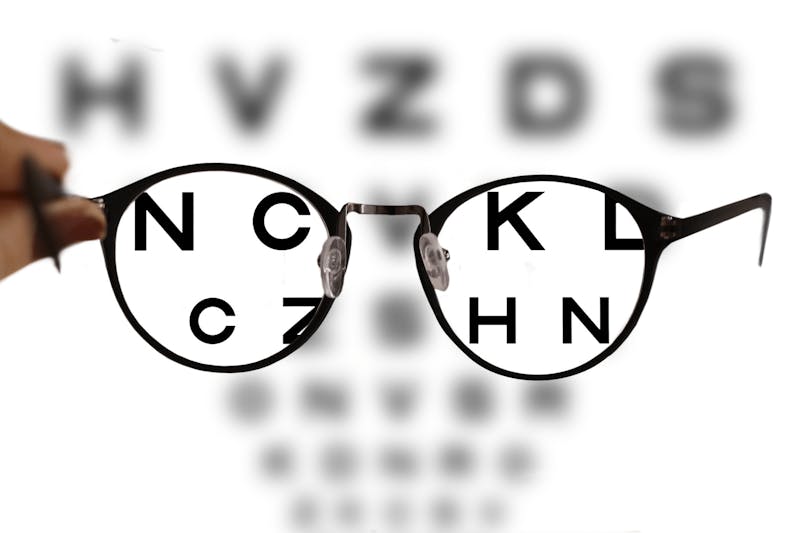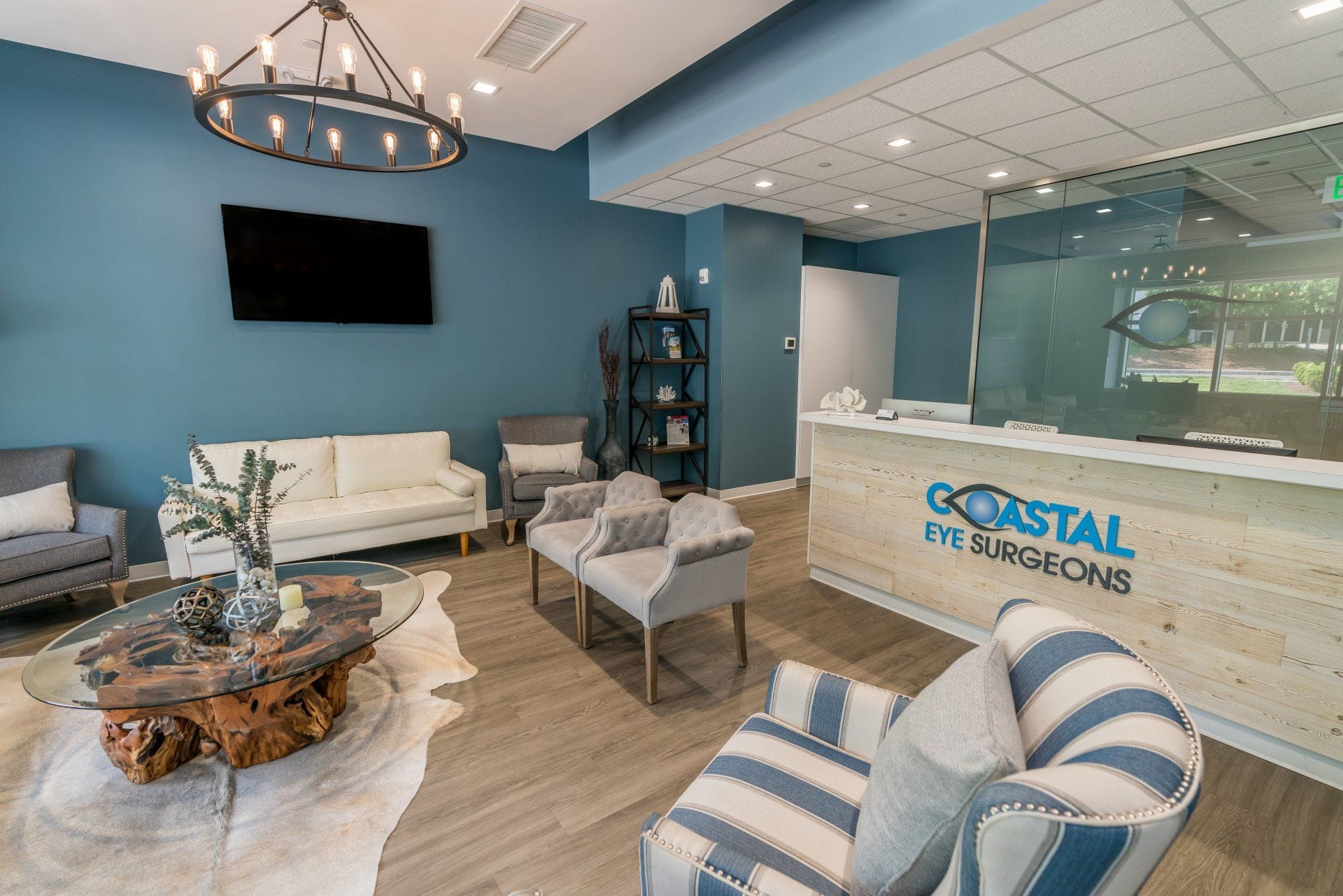
Everything you need to know:
From the moment you’re born throughout the aging process, you’re going to experience a number of changes, flaws, inconsistencies, and issues with your eyes and overall vision. Some of these eye problems are present at birth, while other problems develop and evolve over time.
The bad news is these eye problems can lead to vision impairment or even a complete loss of vision. The good news is there’s a world of technology out there ready to help you treat and even correct eye problems in most cases. Of course, early detection is extremely important.
Of all the issues your eyes can experience, perhaps none are more common than refractive errors. While there are several different refractive errors, the two most prominent ones are nearsightedness and farsightedness. You’ve likely heard of them, but what exactly are they?
So, what is nearsighted vs. farsighted vision?
Nearsighted and farsighted vision are two common types of refractive errors that impact millions of people around the world on a daily basis. In fact, nearly 30% of all Americans suffer from nearsighted vision, while 60% of Americans suffer from farsighted vision, according to the AOA.
So, what exactly are they? Well, it’s actually quite simple. Nearsighted vision occurs when an individual has difficulty seeing objects at a distance -- they’re near-sighted. On the flip side, farsighted vision occurs in individuals that have difficulty seeing objects up close -- far-sighted.
In other words, nearsightedness refers to the ability to see objects close up, but distant objects appear blurry. Farsightedness refers to the ability to see distant objects clearly, but objects nearby appear blurry. As you can imagine, they both impact your ability to live a quality life.

Causes & Symptoms of Myopia (Nearsightedness):
Refractive errors are caused by an irregularly-shaped cornea or eyeball, which results in light not focusing onto the retina properly. Also known as myopia, nearsighted vision is no different and is generally caused by a cornea with a steep curve or an eyeball that’s longer than normal.
Normally, light travels through the cornea and pupil before making its way to the retina. There, it’s converted into an electrical signal that’s sent to the brain via the optic nerve. With nearsighted vision, the light is focused in front of the retina -- opposed to directly on the retina.
Here are some of the most common symptoms of myopia:
- Blurred vision with distant objects
- Aching eyes or eye strain
- Headaches
- Needing to squint to see from far away
- Eye fatigue when looking at distant objects
If you have nearsighted vision, you likely have a hard time recognizing faces from long distances, seeing objects or signs while driving, reading billboards or signs on buildings, or aisle markers in the grocery store. It can get worse as you age, so it’s best to detect and treat it early.
Causes & Symptoms of Hyperopia (Farsightedness):
We know that nearsightedness results in light being focused in front of your retina, but what about farsightedness? Also known as hyperopia, farsightedness occurs when light is focused behind the retina, which causes blurred vision when looking at things up close, but not far away.
Where myopia is generally characterized by a steeply-curved cornea or longer-than-normal eyeball, hyperopia is characterized by a flat cornea that isn’t curved enough or when the eyeball is shorter than usual. Either way, you’ll have a hard time seeing things in front of you clearly.
Here are some of the most common symptoms of hyperopia:
- Blurred vision with objects nearby
- Needing to squint to see up close
- Eye strain or eye fatigue when focusing up close
- Headaches after looking at things up close
If you have farsightedness, you likely have a hard time reading a book or newspaper, reading messages on your smartphone, browsing the internet on your laptop, seeing the total amount due on shopping receipts or invoices, or reading nutrition facts on the back of an ingredient label.
How to Treat & Correct Nearsighted and Farsighted Vision
Living with nearsighted or farsighted vision can be frustrating, but a comprehensive eye exam with your local ophthalmologist can help you find relief. In fact, there are several ways you can treat and even correct nearsightedness, farsightedness, or any other refractive error out there.
The most traditional and easiest way to correct your vision is with prescription lenses, either for eyeglasses or contact lenses. You’ll either have to keep your glasses handy or get used to having contacts in your eyes, but it can help you see clearly from up close and from far away.
If you’re looking for more of a permanent solution, refractive surgery is a safe and effective option for most people. There are a number of surgeries to consider, including laser in-situ keratomileusis (LASIK), photorefractive keratectomy (PRK), and radial keratotomy (RK).

Other Refractive Errors of the Eye:
Of the four major refractive errors of the eye, nearsightedness and farsightedness are the two that most people know of. The other two refractive errors, which are just as important and just as damaging to your quality of life, are astigmatism and presbyopia. Let’s take a closer look.
With astigmatism, you have difficulty seeing nearby and distant objects. A corneal astigmatism is irregular curvature or shaping of the cornea, while lenticular astigmatism is irregular curvature or shaping of the lens. The steepest curve of the eye either runs vertically or horizontally.
On the other hand, presbyopia is very similar to myopia. The main difference is presbyopia occurs in older adults and is caused by the normal aging process. It’s possible to be diagnosed with presbyopia and also be diagnosed with either nearsightedness or farsightedness.

Contact Coastal Eye Surgeons to Learn More!
Scheduling a regular eye exam with your eye doctor can go a long way in helping you detect, diagnose, and treat myopia or hyperopia in a timely manner. Whether you believe you have a refractive error or it’s been a while since your last eye exam, contact Dr. Omar Shakir today!
At Coastal Eye Surgeons, we have the equipment, experience, passion, and desire to serve Greenwich and the surrounding communities with best-in-class eye care services. To learn more about our services or schedule your first exam with Dr. Omar Shakir, contact us today!

